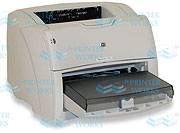In our last episode, we looked at “How Photocopying Machines Work”; in many cases, most of the photocopying machines apply the laser technology in the execution of their tasks, however, others apply other technologies like inkjet etc.


In our last episode, we looked at "How Photocopying Machines Work”; in many cases, most of the photocopying machines apply the laser technology in the execution of their tasks, however, others apply other technologies like inkjet etc.
It is important to note that, a photocopying machine performs two or three functions in order for them to carry out their basic tasks.
Basically, the machine must capture the image from its origin, and finally put it on paper, a function more or less equal to printing. It is for this reason that I am forced to say something on the Laser Jet printers (this is common and cheaper form of printing).
The term inkjet printer describes how the process works; these printers put an image on paper using tiny jets of ink. However, the term laser printer is a somehow mysterious, how can a laser beam, a highly focused beam of light, write letters and draw pictures onto a print media?
The basic principle at work in any laser printer is static electricity, the same energy that makes clothes in the dryer stick together or a lightning bolt to travel from a thundercloud to the ground.
Static electricity is simply an electrical charge built up on an insulated object, such as a balloon or your body, because there is no conductor to drain this electrical charge out, it accumulates and is held as a charge.
Since oppositely charged atoms are attracted to each other, objects with opposite static electricity fields tend to cling together.
A laser printer uses this phenomenon as a sort of "temporary glue.” That is to say, as long as the device is actively working, it holds the charges and discharges them as soon as it is done with then.
The core component of this system is the photoreceptor, which is a revolving drum or cylinder. This drum assembly is made out of highly photoconductive material that is discharged by light photons.
This is the point where both the LaserJet and the Photocopier are related.
The major difference is that, where as the Photocopying machine generates its images from scanning the original copies placed on the imaging scanner via the glass top, the printer takes its print subjects from purely external sources like computers, cameras, and any other devices requiring printed output.
Now days, we have machines that commonly go under the initials of "MFP” (Multi Functional Printer), these combine both the photocopying as well as the printing characteristics.
The beauty with these machines is that they save you from the trouble of buying two, three or even machines as one comes with a multitude of tasks.
As is known, the photocopier does scan its subjects before printing them out on paper, thus, the scanning function can comfortably be added without compromising performance.
When you look at a fax machine, it does more or less scanning, sending the images over the facsimile line and then printing; we end up with a printer of a sort.
When all the four functions are combined, we have a supper LaserJet (though inkjets could do the same) that is capable of Scanning, Faxing, Copying as well as printing.
Laser printers have many significant advantages over other types of printers.
Unlike impact printers, laser printer speed can vary widely, and depends on many factors, including the graphic intensity of the job being processed.
The fastest models can print over 200 monochrome pages per minute (12,000 pages per hour). The fastest colour laser printers can print over 100 pages per minute (6000 pages per hour).
Very high-speed laser printers are used for mass mailings of personalized documents, such as credit card or utility bills, and are competing with lithography in some commercial applications.
The cost of this technology depends on a combination of factors, including the cost of paper, toner, and infrequent drum replacement, as well as the replacement of other consumables such as the fuser assembly and transfer assembly.
Often, printers with soft plastic drums can have a very high cost of ownership that does not become apparent, until the drum requires replacement.


